Egg Tagliatelle
This homemade Egg Tagliatelle pasta recipe is super-easy to make! It is a traditional Italian egg pasta that is worlds away from the stuff you buy in packages from the supermarket.
With my tagliatelle recipe and simple step by step photos, you can be a pasta professional instantly!
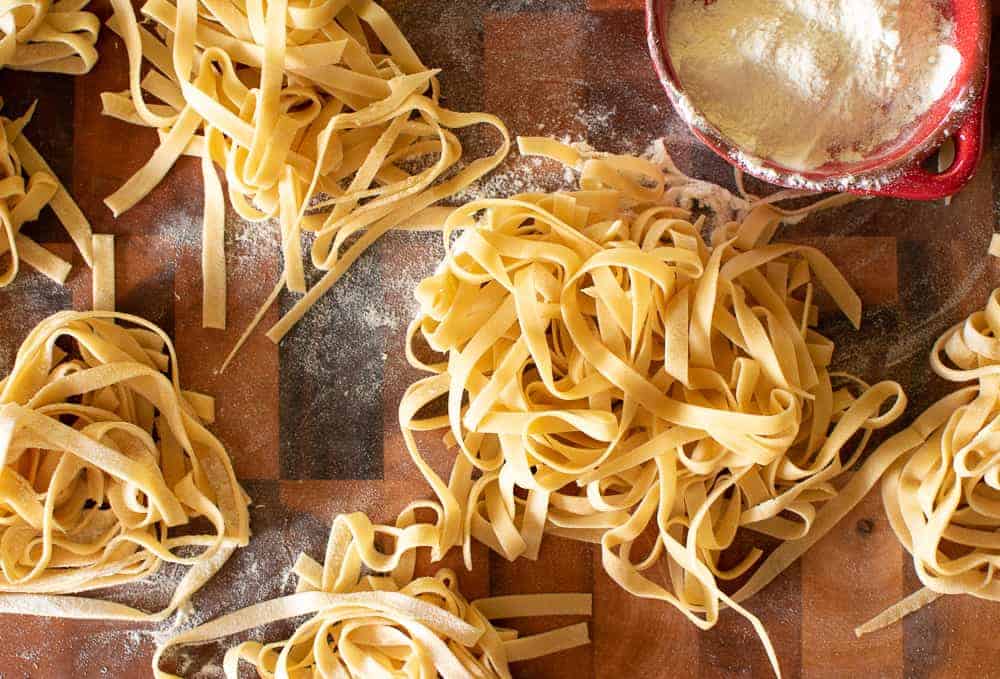
Pasta is, and has been part of my life for as long as I can remember. I have very fond memories of watching my mother and, later, my father make egg tagliatelle pasta by hand. As I grew older, it was something I enjoyed helping with.
After my mother passed away, Dad took over the job of cooking, and little did I know how good he was at making pasta! He would use his fingertips to blend the egg slowly with the flour until the egg was no longer runny then he would scoop in the flour and mix it all together, kneading until smooth.
We used a pasta machine to roll out the dough, and my dad would tell me to turn my “manine” (little hands) over so that my warmer palms faced down and I could catch the pasta with the cooler tops of my hands. Learning by watching, helping, and living the recipe is a gift from my Italian family.
WHY YOU’LL LOVE THIS RECIPE
- Versatile – Tagliatelle pasta is easy to make and so versatile! So much so that I’m sure you’ll find an excuse to make tagliatelle as part of your usual meal rotation. Using this exact recipe, you can also make many different Italian pasta shapes, filled pasta, and lasagne.
- Variable -This is the traditional pasta for the tagliatelle bolognese – the rich, meaty sauce clings to the tagliatelle strands as you twist, twirl, and scoop it into your mouth. However, it’s so versatile that you can pair it with almost anything, including my nut free pesto or tasty garlic butter sauce. For convenience, I like to make a big batch of my authentic bolognese sauce to store in the freezer which is so tasty with these tagliatelle!
- Adaptable – This egg pasta is perfect for any filled pasta recipes like these fagottini or my spinach ricotta ravioli. Fagottini are little pasta parcels filled with delicate ricotta and look absolutely amazing!!
INGREDIENT NOTES
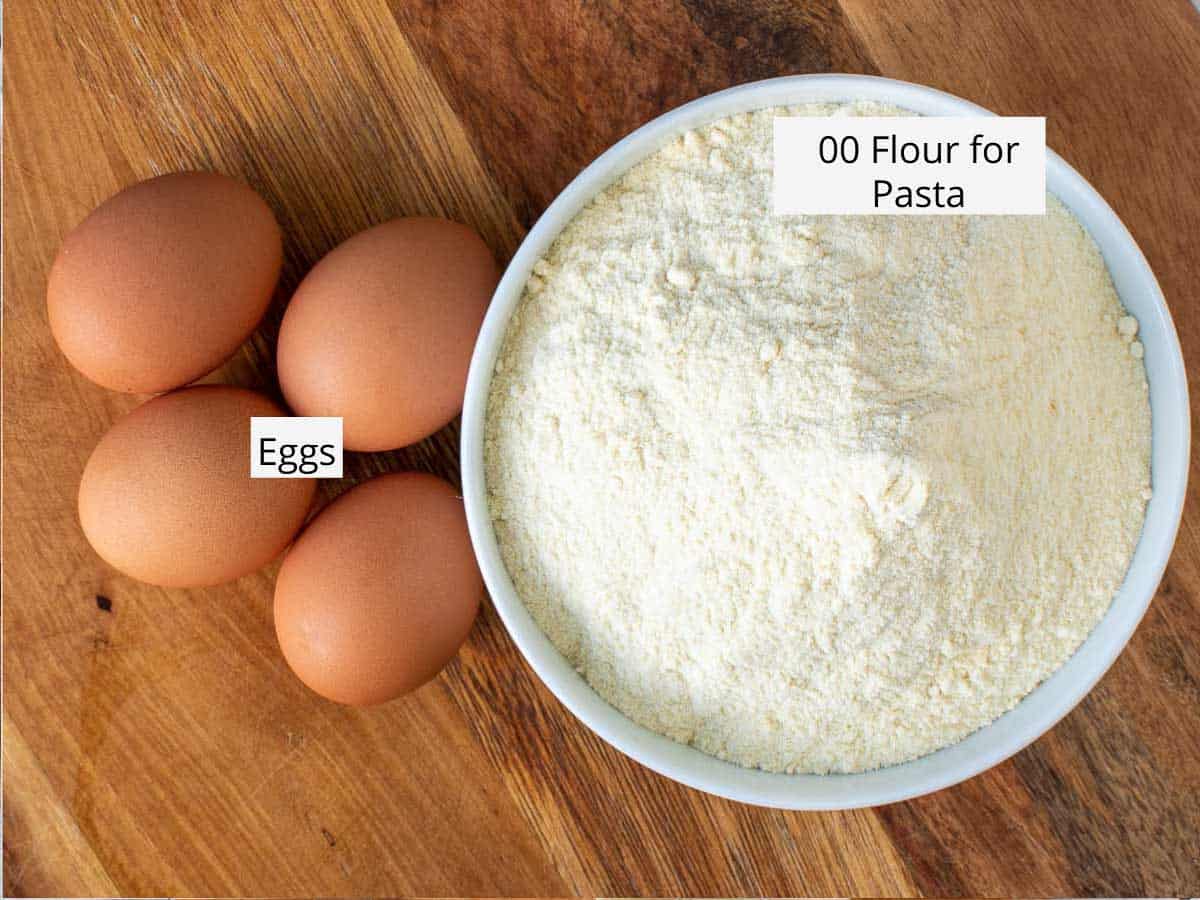
My easy tagliatelle recipe only needs two ingredients:
- Eggs – free range is best in this recipe.
- Flour – look for 00 pasta flour, but if you can’t find it or don’t have it, you can use any plain/ all purpose flour.
EQUIPMENT NEEDED
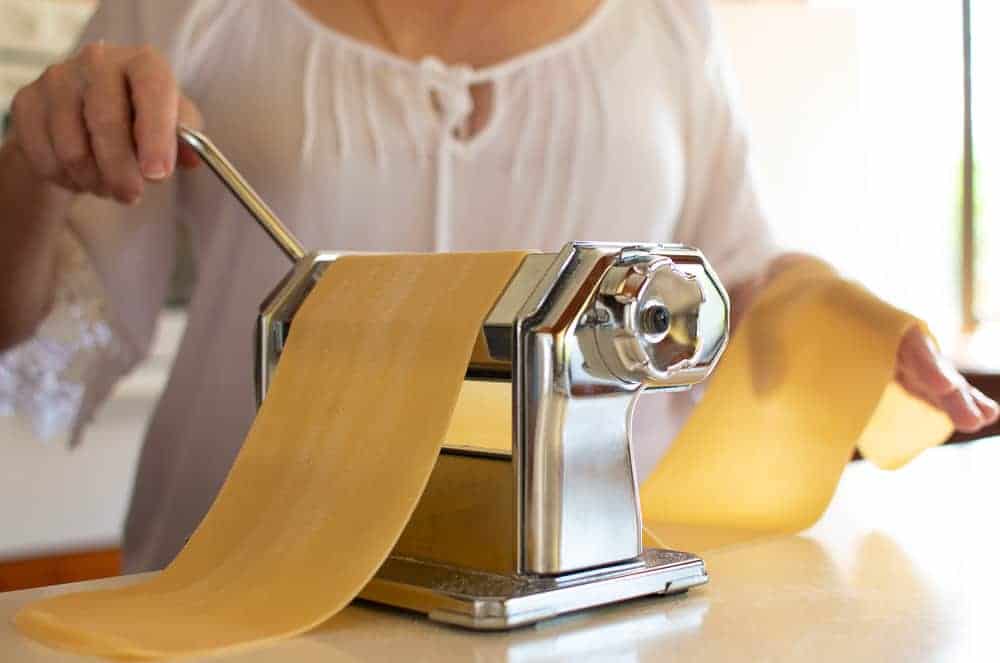
I use a pasta machine. I make a lot of pasta (in case you haven’t already guessed!) so I make good use of a machine, and it represents good value for me. However, if you don’t have one – don’t worry! Just be a little more patient and roll the dough out with a rolling pin 6 – 8 times so that it’s silky smooth.
INSTRUCTIONS
The numbered photos match the steps described below.
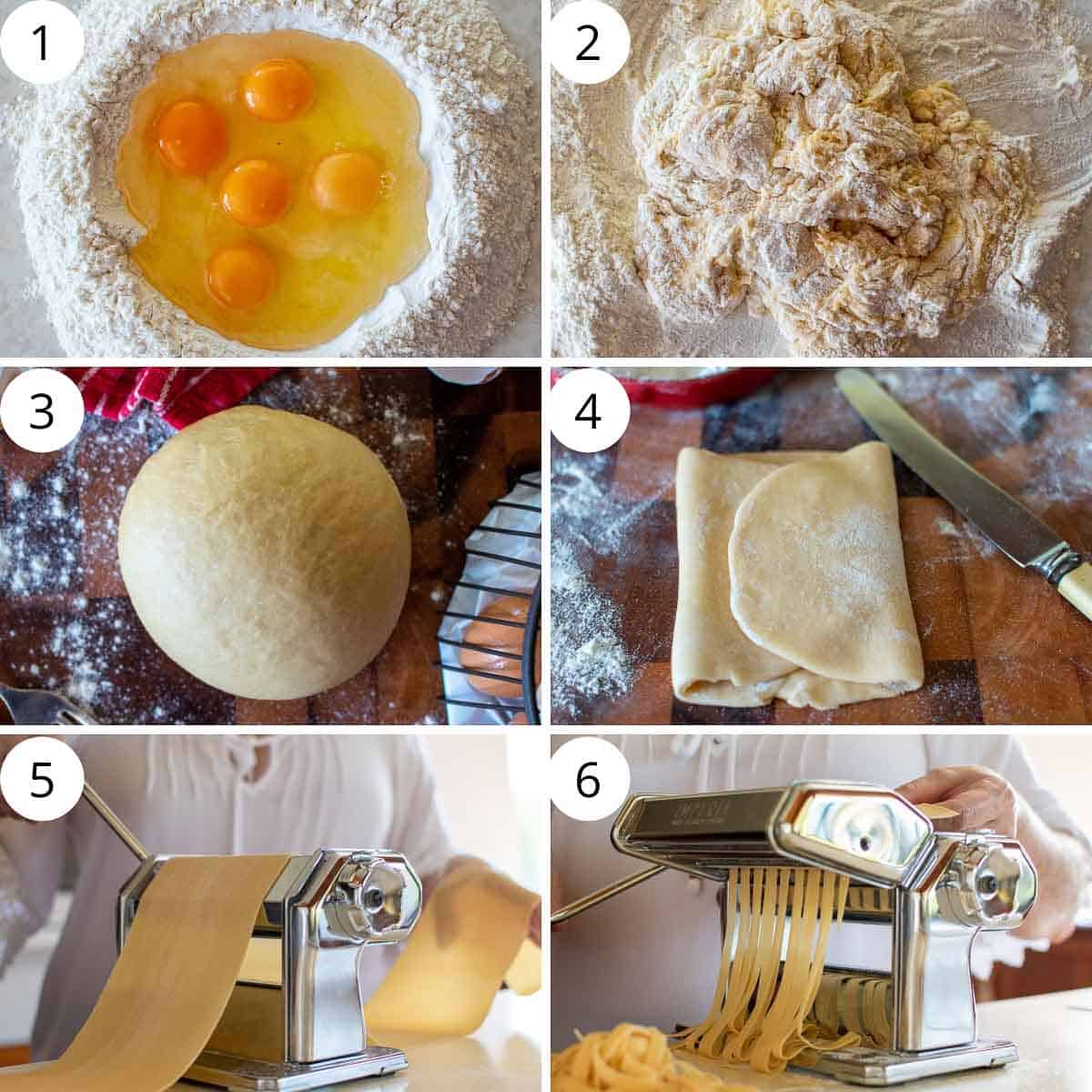
- Firstly, prepare the dough by cracking the eggs into a flour well.
- You will need a roomy work surface and a fork. Or even more simply – like my dad – just use your fingertips. You can see in the step by step photos how the eggs are slowly blended with the flour. Knead the dough for 8 – 10 minutes (it’s a great arm workout!).
- Roll the pasta dough into a ball and cover with plastic wrap while you allow it time to rest – at least 30 mins, but up to 3 hours.
- Separate a golf ball sized dough ball from the larger dough ball – keeping the larger amount covered until you’re ready to use it. Pass the dough through the widest setting on your pasta machine 6 – 8 times, folding it into thirds after each pass.
- Start to reduce the roller settings on your pasta machine as you stretch out the dough until it is thin enough to be somewhat transparent. Use a rolling pin if you don’t have a pasta machine.
- Cut the pasta into tagliatelle using the cutting attachment on your pasta machine. Alternatively, you can cut by hand using a sharp knife. Lay the tagliatelle out on a floured tablecloth to dry.
TIPS FOR SUCCESS & FAQs

Be sure to measure ingredients correctly. But if you find that the dough is too dry, add teaspoonfuls of water, kneading well until the dough is pliable and smooth. Conversely if the dough is too wet, add a little extra flour.
Secondly, rest the dough for at least 15 minutes or – optimally – up to 1 hour. I prefer not to make the dough the day before, but resting is important to produce delicate pasta.
The next most important step when rolling pasta is to “laminate” the dough. By this I mean that you pass the hand flattened dough through the widest setting on the pasta machine and then fold into three as shown in the photo below and pass again through the same widest setting. Continue to do this 6-8 times until the pasta is smooth before reducing the width of the pasta rollers.
FAQ
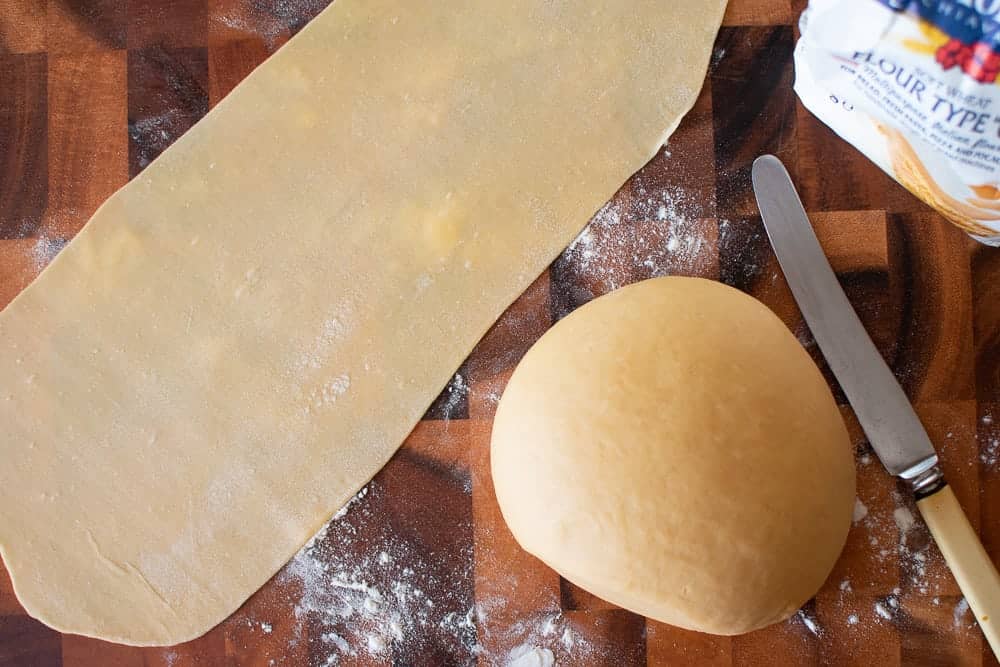
I know you’d expect me to talk about the flour, or eggs verses egg yolks. However while the type of flour may makes a small difference and extra egg yolks add richness, this tagliatelle recipe is the one I grew up on. My family didn’t have access to special flour – we just used ordinary plain or all purpose flour. And the eggs from our chickens were rich and yellow. Naturally, the better your ingredients, the better the result. See the notes section in the recipe for further tips.
Not necessarily. Reduce the flour by a spoonful or two to make a softer dough. Then use a wooden rolling pin and a light dusting of flour to roll out the dough. In the photo below, I have hand rolled the sheet of pasta. Can you see the little air bubbles? That’s an indication of well kneaded dough.
Hand rolled pasta has a different quality to smooth machine rolled dough because it is slightly more rustic and seems to allow the sauce to stick just a little better. Ok, I concede, rolling the dough by hand is not going to be quick and easy but it will be delicious.
Yes! When I was ready to marry, my mother-in-law stepped in to buy my first pasta machine which I had until not long ago. It was an Imperia and it served me well for many years. I recently bought a KitchenAid I love it – it makes pasta so much quicker and easier than using a rolling pin.
If you decide to buy a machine to roll and cut the pasta dough, my recommendation is to buy a good quality one. Some are not made well and I find there is a space between the rollers and the end of the machine. This means that the edges of the pasta get caught and it makes rolling frustrating.
In the photo below, I have hand rolled the sheet of pasta. Can you see the little air bubbles? That’s an indication of well kneaded dough.
No… and yes! The two types of pasta are very similar but there are some distinctions. Firstly, tagliatelle is slightly narrower and often thinner (ie, flatter) than fettuccini.
Secondly, tagliatelle pasta is more common in Northern Italy (in and around the Emilia-Romagna region (which includes the region’s capital, Bologna) and the Marche region). Fettuccini, on the other hand, is more commonly used in Rome in central Italy.
Fun fact: Did you know that the Bologna Chamber of Commerce holds a solid gold piece of tagliatelle pasta that is supposed to demonstrate the exact dimensions? It is 1mm in thickness and 6mm wide. I am not as pedantic as that, so however you cut your tagliatelle is just fine by me!
SERVING SUGGESTIONS
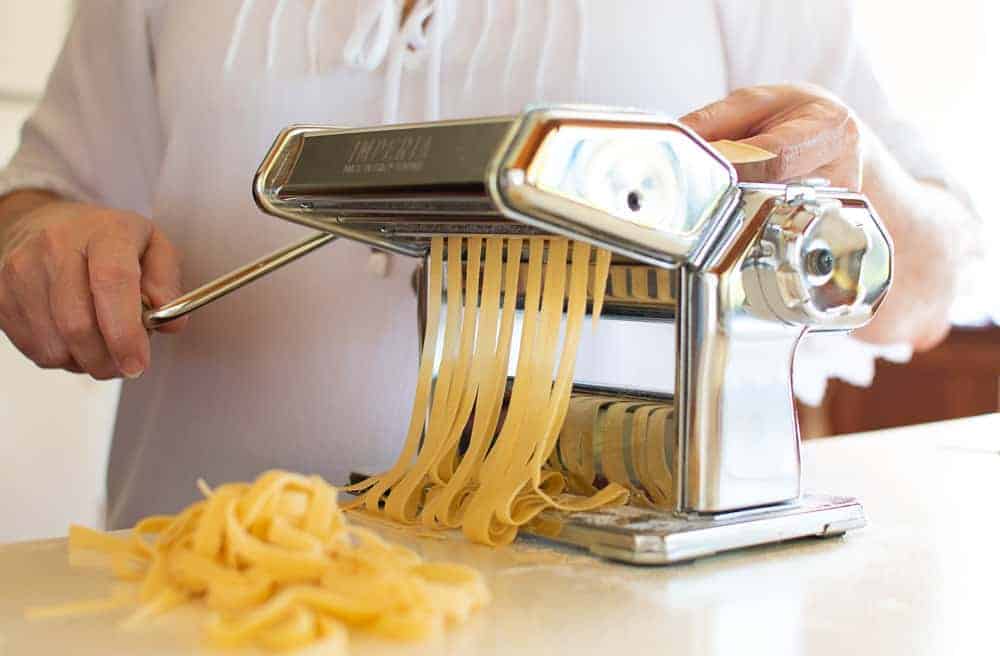
Be sure to partially dry the pasta before cutting by hand with a sharp knife or passing through the cutting attachment on the pasta machine as you can see in the photo above. Dry the pasta on a lightly floured tablecloth and turn over to help drying. It will take around 15-20 minutes. However, that time will depend on how dry or humid your environment is.
You can be enjoying fresh egg tagliatelle made with your own hands today! It’s really not hard and is so delicious you will be wanting to make it again and again. You may even want to try some more adventurous recipes like tonnarelli or Busiate.
MORE RECIPES LIKE THIS
I find making homemade pasta to be very rewarding. I enjoy knowing exactly what’s in the food I’m eating and feeding to my family, and to know that it’s fresh. If you’ve enjoyed making my tagliatelle recipe, are you ready to try some other styles of Italian pasta? Check out:
Homemade Orecchiette with Broccoli and Bacon
Garganelli Pasta
Rigatoni Arrabbiata
Cavatelli Pasta
Made this recipe?
Please let me know if you liked it by leaving a ★★★★★ star rating and a review below. And remember to subscribe to my newsletter – it’s free!
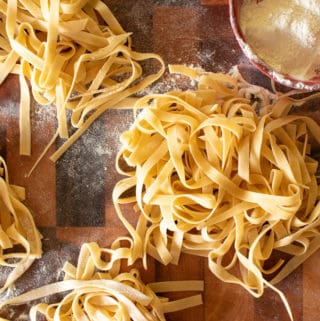
Tagliatelle Pasta
Equipment
- Pasta machine
Ingredients
- 5 extra large eggs at room temperature
- 17½ ounces 00 flour (or 500 grams) See Notes 1 & 2
Instructions
- Reserve a couple of tablespoons of flour. Tip the remaining flour onto work surface and make a well in the middle. Be sure to leave some flour at the bottom of the well.
- Crack eggs into the well in the flour.
- Using a fork (or fingertips) whisk and mix the eggs dragging in a little bit of flour from around the edges.
- Keep working with your fork (or fingertips) bringing a little of the flour. Be careful not to break the edge of the well or the egg will escape. The egg should be almost custardy.
- Continue to bring in the flour bit by bit until the egg has enough flour to no longer be runny. At the point you can use both hands (with the help of a dough scraper) to bring in the rest of the flour. It will be a shaggy dough.
- With two hands, knead and bring the dough together. Add more flour as needed. The dough should not be sticky. If you are rolling by hand do not add too much flour.
- Knead the dough for 8-10 minutes or until it is smooth and you feel the change in the dough. Don't omit this kneading.
- Put an upturned bowl over the dough or wrap in plastic wrap and allow to rest for 30 minutes or so.
Hand rolled pasta
- Divide the dough into about 8 smaller portions. Take one portion and keep the remaining dough covered.
- Lightly flour your work surface and rolling pin. Form the dough into a rough rectangle.
- Roll, lightly flouring as necessary into a long thin strip of pasta dough, stretching and pressing as you go. I like to continue in a long, wide strip. The aim is to have an even thickness. You should be able to see the colour of your hand through the dough.
- Set aside on a lightly floured tablecloth to dry for about 20 minutes while you roll out the remaining dough. Turn the sheets over to assist drying.
Using a pasta machine to roll
- Cut off a small piece of dough and keep the remaining dough covered.
- Lightly flour the machine rollers and the work surface. Set the pasta machine rollers at the widest setting.
- Press the portion of dough flat into a thick rectangle and guide through the rollers.
- Fold into thirds and pass again through the widest setting. Repeat this 6 to 8 times until the dough is smooth. You may need to flour lightly to stop sticking and tearing.
- Don’t worry if the dough does tear. Just keep folding and passing through the rollers.
- Only when the dough is smooth, start to reduce the settings of the rollers. Reduce just one setting at a time, until you have reach the desired thickness.
- Set aside on floured tablecloth to dry for about 20 minutes while you roll out the remaining dough. Turn the sheets over to assist drying.
How to make tagliatelle
- When the dough is partially dry but still flexible, roll up into a flat roll and cut into ⅜ (or 1cm). Separate strips and allow to dry before cooking.
- If you have the cutting attachment for the pasta machine, pass the semi dried pasta sheets through to cut into tagliatelle. Allow tagliatelle to dry before cooking.
Cooking the pasta
- Bring to boil a large pot of well salted water. Drop in the fresh tagliatelle, give it a quick stir to make sure all the strands are separated.
- Cook for 1 to 3 minutes. Taste to test for doneness.
- Drain well in colander. Toss to remove excess liquid. Don’t ever rinse the pasta.
- Combine with sauce of your choice.
Notes
- For greater accuracy, weigh the flour. However if using measuring cups stir the flour to fluff it and then spoon into the cup without packing the flour.
- Pasta can be made with all purpose (plain) flour but I prefer 00 which is a fine Italian flour perfect for pasta. I also like to use a 50/50 combination of 00 flour and fine semolina flour. But don’t let the flour get in your way of making and enjoying your own pasta. My family only ever used all purpose (plain) flour.
- Use a little bit of flour or better still, if you have it, fine semolina, to dust the tagliatelle lightly so it doesn’t stick together.
- Spread it out on a tablecloth and let it dry, checking periodically that it’s not sticking.
- It should dry quite quickly (in less than an hour, a lot less if the climate is dry).
- Then pack it into airtight containers and store in the freezer.
- If it’s cool and dry, the tagliatelle will keep for a short time at room temperature.
- Once the dough has rested it will feel softer but should be perfectly fine to roll. That’s normal. If you have used my preference of a 50/50 combination of 00 flour and fine semolina flour, the dough will be much firmer.
- If the dough is too dry, knead in a little water. If the dough is too wet, knead in a little flour.
- Please never add oil to the cooking water. This just makes the pasta slippery and the sauce won’t stick.
- Once drained, I like to return the pasta to the cooking pot along with the sauce to be combined well. Then transfer into the serving bowl.
Nutritional Estimate Per Serving
Nutritional Disclaimer
Nutritional information is an estimate provided by an online nutrition calculator. For accurate results, it is recommended that the nutritional information be calculated based on the ingredients and brands you use.

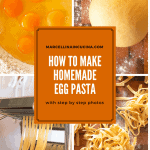
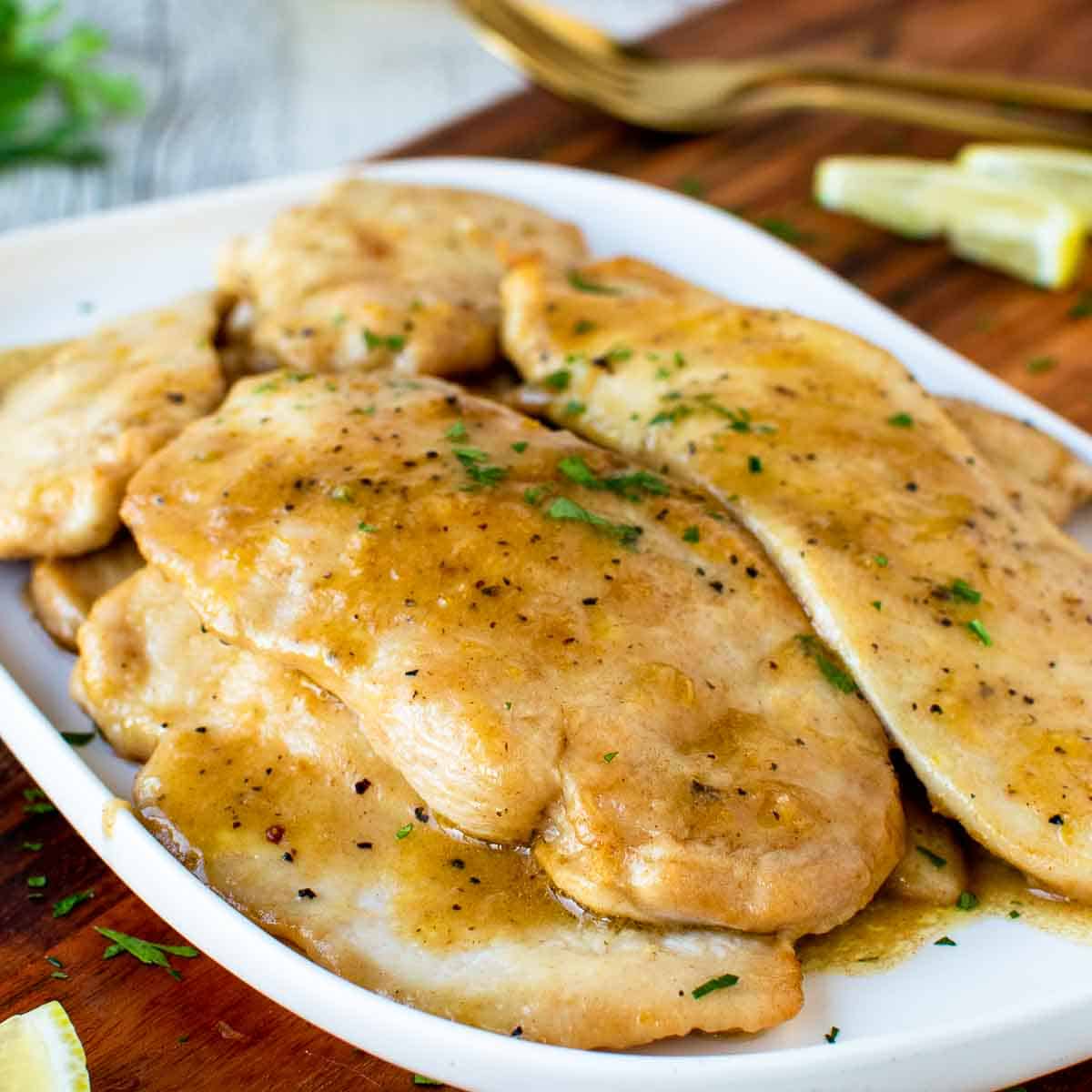
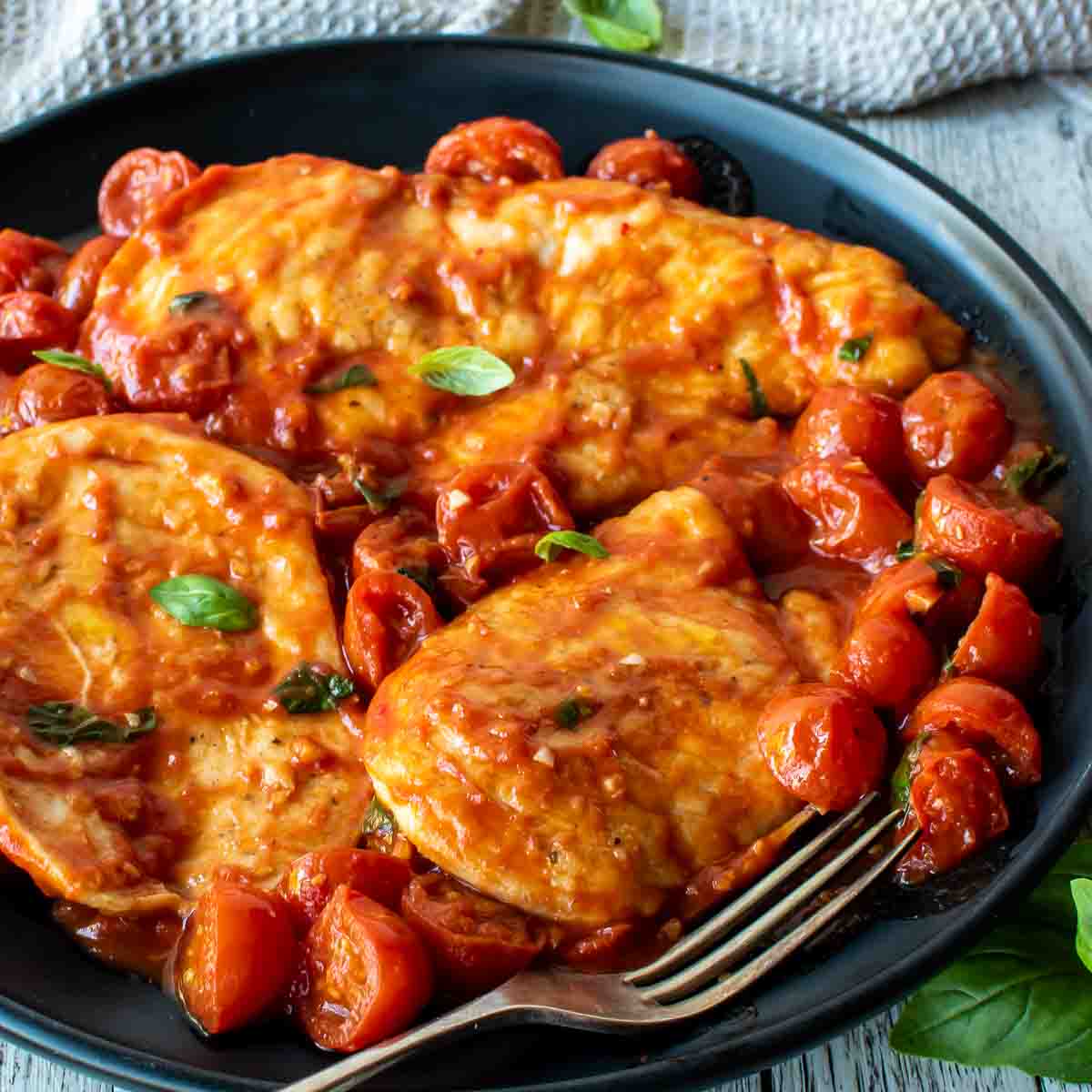
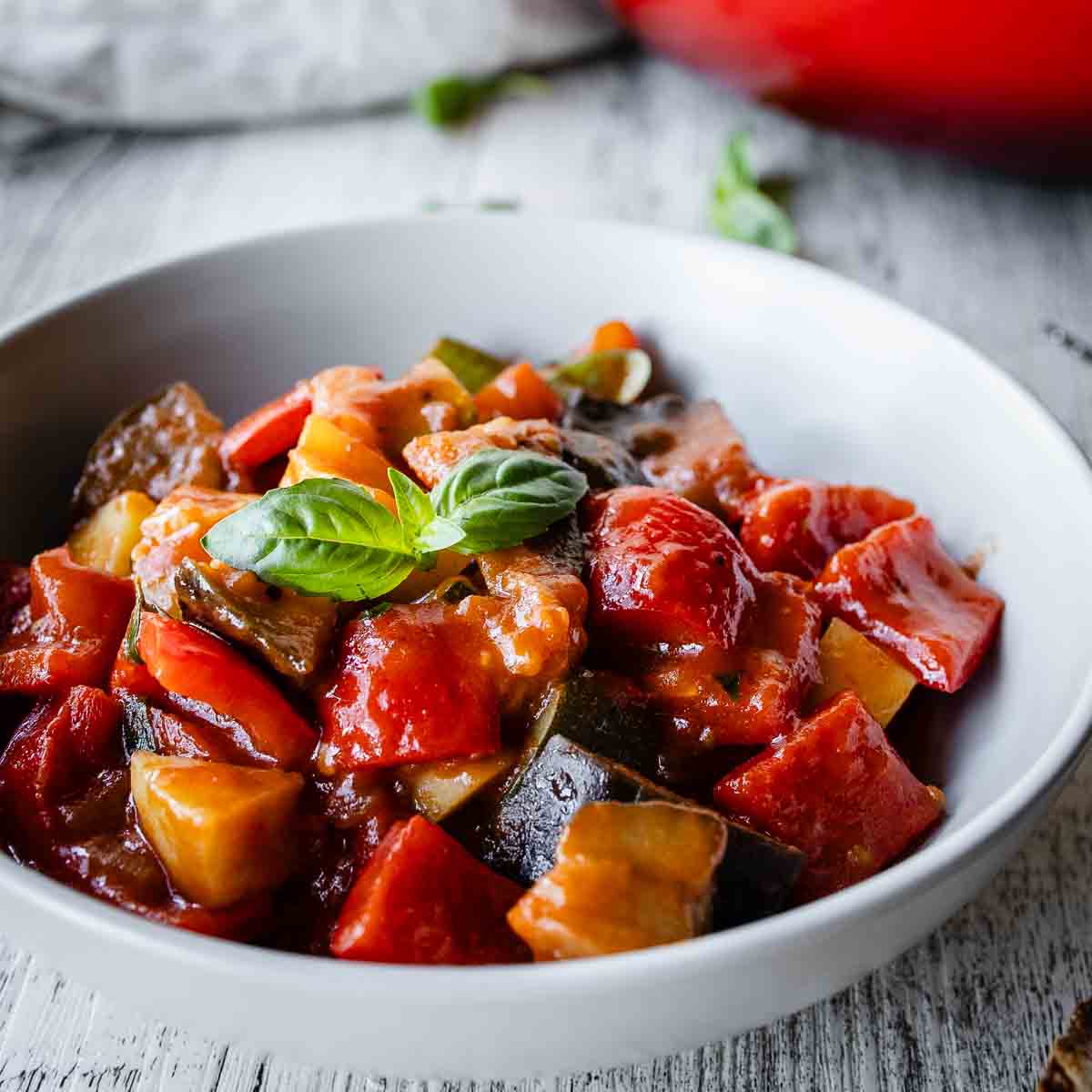

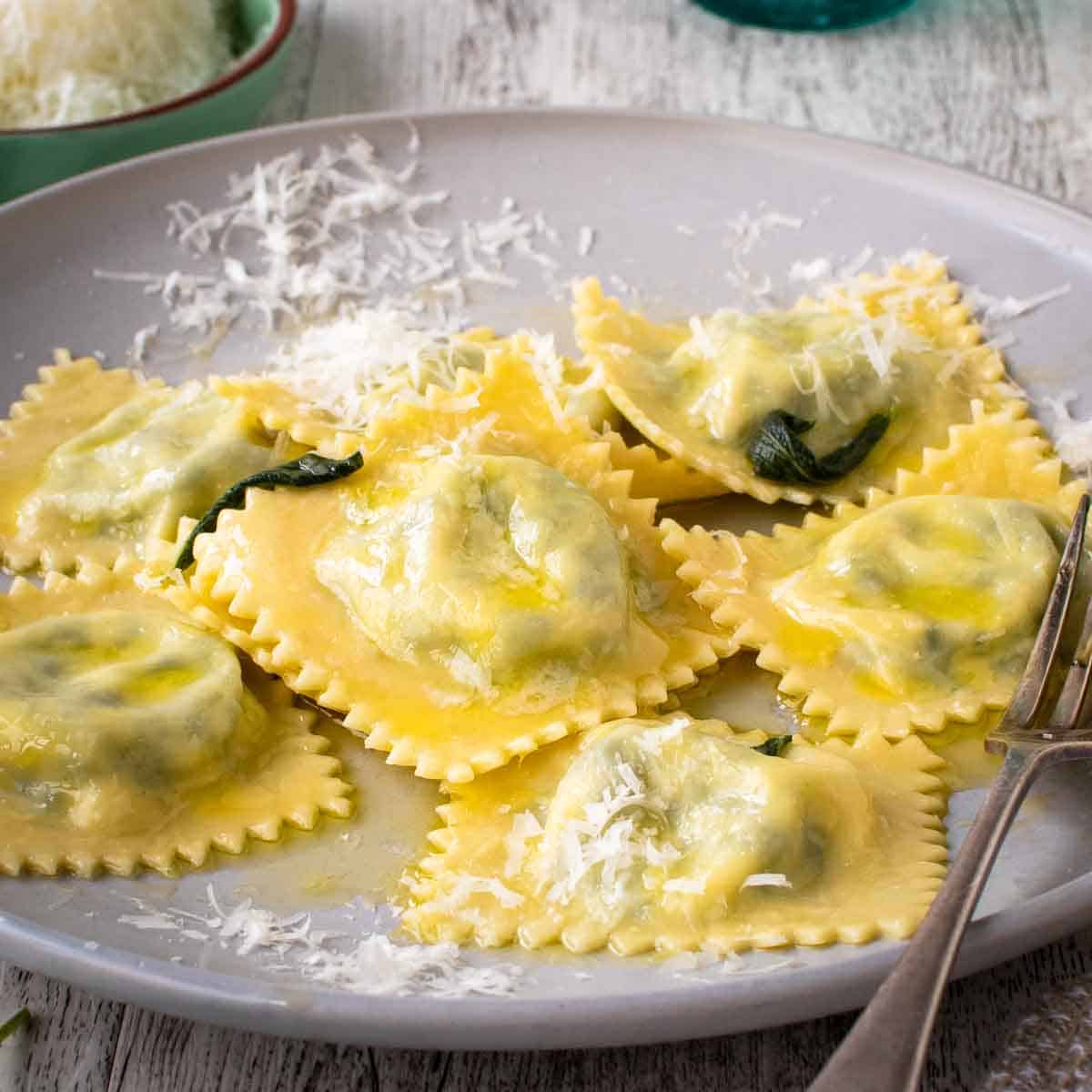
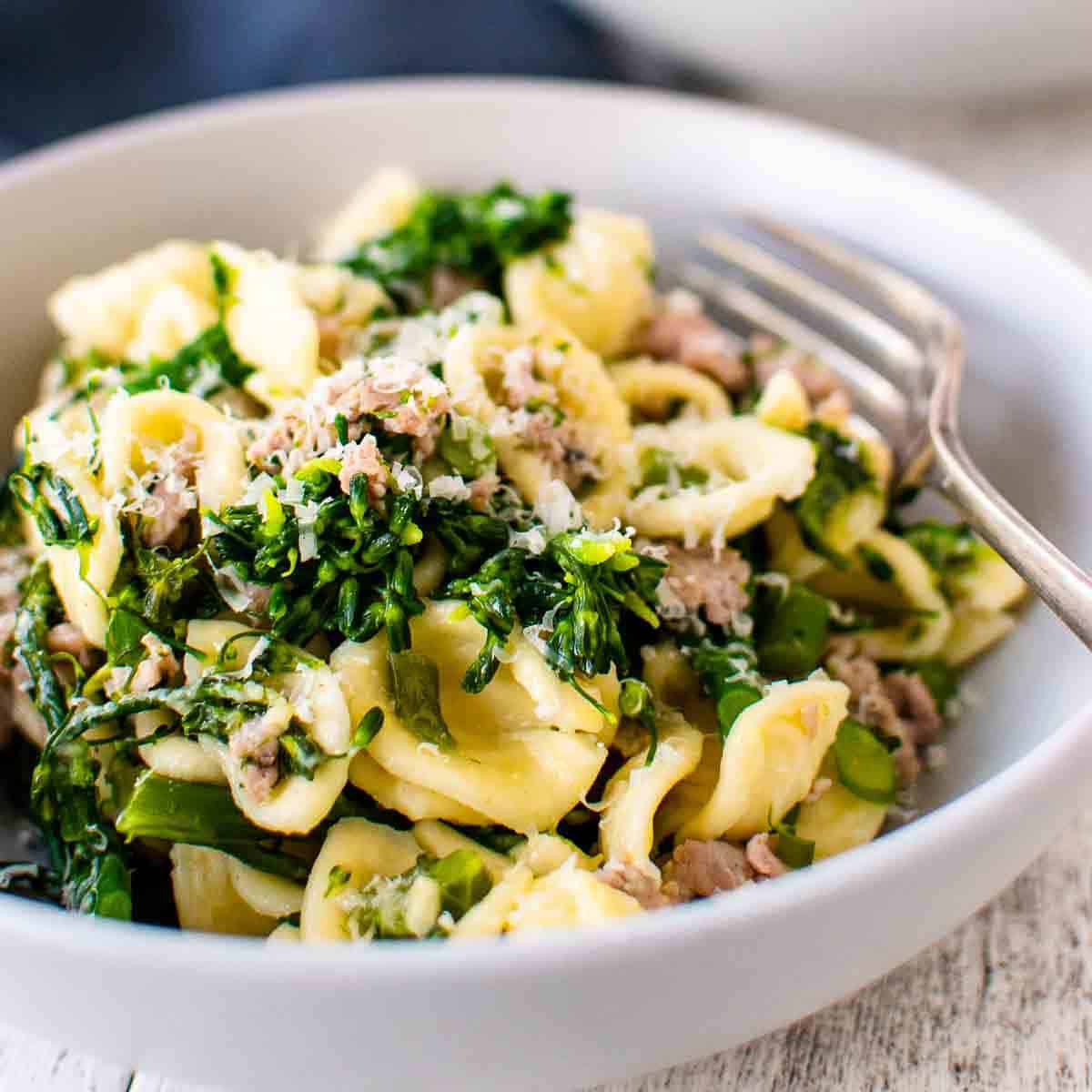
So good! I’ve made pasta before but my last recipe wasn’t that great. This one was definitely better! We did this as an at home date night (last week was gnocchi). Made a lovely chicken and mushroom sauce to go with the pasta and topped with fresh Parmesan. So good! Thankyou
I’m thrilled that you loved our family pasta recipe, Kelsie. It means a lot to me xx
made this today, 1/2 recipe for pasta e ceci! it was fabulous! I handroolled and cut it! a worthwhile workout! thank you
You’re welcome, Anna! Pasta e ceci – YUM!
Used 00 flour and fresh eggs and the dough was SO STIFF. Kneaded until smooth and rolled as thin as possible but was more like a dumpling than a noodle. Not sure what went wrong.
Hi Nysha, I’m sorry this happened to you. The ratio in the dough was off for some reason but all is not lost. There are ways around this. Did you remember to use extra large eggs? Did you weigh the flour or use measuring cups? If you used measuring cups it’s easy to pack too much flour into the cup and therefore end up with too much flour. I recommend stirring the flour to lighten then spoon the flour into the measuring cups before levelling off with the blade of a knife. If you did all of these things correctly, it is possible that the weather has affected your dough. If the weather is particularly dry, pasta dough will be dry. All of these factors can be solved by just adding a little bit of water, a teaspoonful at a time and kneading until the dough is smooth and pliable. It will still work and taste delicious!
I made this pasta to serve with a bolognese sauce I made. Wow, homemade pasta is the best!
Sure is!
It was delicious! Everyone of my family loved this.
Such an easy to follow recipe! Thank you so much for sharing! It turned out so good!
This looks so good. Can’t wait to try this recipe.
This is such a delicious homemade pasta! Came out perfectly tender.
So glad you enjoyed these tagliatelle, Amanda!
Never thought I could do this but I could! Thanks!
Do you have a ricotta cavatelli recipe? I would be using it with the cavatelli machine.
Would the recipe be the same if making them on a board instead of a machine?
Thank you
Hello Jan, no I don’t have a ricotta cavatelli recipe on the blog. With the machine, I think you just might have to be careful with the consistency of the dough – if it’s too sticky you’ll have trouble. So add a little extra flour, in that case. Try 1lb (450g) ricotta, 1lb (450g) flour with one egg and 3-4 tablespoons water and a good pinch of salt. Add the water carefully just in case it gets too sticky. Otherwise add a little extra flour. Let me know how they go!
this is a great post Marcellina!!! i love the step by step shots, i’ve always been afraid to make my own pasta but this is really helpful!
Georgie, you should definitely not be afraid to make your own pasta. Try it! Let me know how you go and if you have any questions, get back to me. xx
Great photos. A wonderful tutorial!
Thank you Mimi! I hope to inspire everyone to make their own pasta!
Great post! My pasta making machine has been tucked away in the spare room for years- I’m going to get it out soon!
Definitely do that, Fran!I’d love to see your pasta making photos!
Love this! May fresh pasta be available to all!! xx
Viva Pasta!!
Thanks Marcellina for the great pasta recipe. It’s good to know I don’t need to always use 00 flour whenever I get the urge to make homemade pasta. Pinned for later reference x
Yes, it’s true. In fact my Italian mother in law to this day has never made pasta with any other flour other than plain (all purpose). We live in a regional area and for a long time specialty flours were not available. Thanks for your comments! x
Wonderful tutorial!
Thank you Ronit! I love making (and eating!) pasta. Hope I never need to reduce the carbs in my diet!
Love your pasta photos